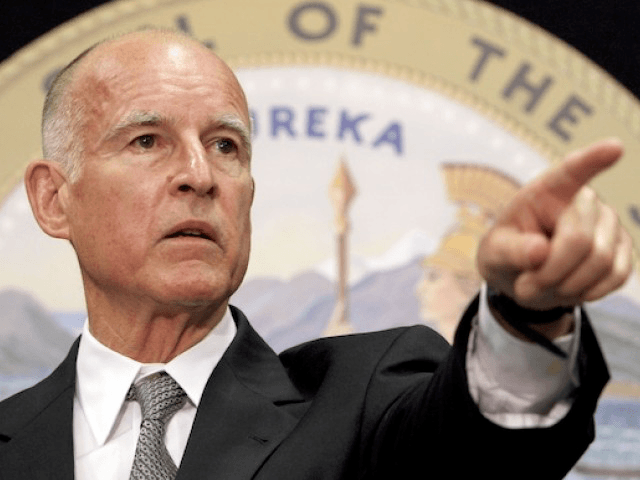Governor Jerry Brown triumphantly unveiled a record $113 billion state budget this week that increases spending by 5%, with promises to give a boast to K-12 schools, deposit $1.2 billion into the rainy day fund, and make a $1.2 billion debt payment. Yet he barely mentioned that healthcare costs for Covered Care, Medi-Cal and retirees are on fire and are sure to burn down California in the next recession.
Although Covered California was sold to the public as a way to help middle class Californians buy health insurance, it has turned out to be a wildly expensive welfare program that will eventually bankrupt the state, while also spiking health costs for those same middle class Californians.
From 2011 to 2014, California took steps towards expanding Medicaid under the Affordable Care Act (ACA) by implementing Low Income Health Programs (LIHPs) in most California counties. Under the “Bridge to Reform” Medicaid §1115 waiver, just over 500,000 California adults were enrolled in coverage in advance of ACA implementation using federal and county funds. The vast majority of LIHP enrollees were transferred into Medi-Cal coverage under the ACA beginning January 1, 2014.
California legislators passed Covered California, which implemented key provisions of the ACA, such as the expansion of Medi-Cal to low-income adults under age 65, including those without children living at home. Lawfully-present childless adults with income up to 138% of the Federal Poverty Level and parents with incomes from 106% to 138% of the Federal Poverty Level were newly eligible for Medi-Cal beginning in 2014.
Estimates for Medi-Cal Expansion among made by the UC Berkley Labor Center for both the newly and already eligible state residents were projected by using the UC Berkeley/UCLA California Simulation of Insurance Markets model. About 1.4 million Californians were expected to be newly eligible for Medi-Cal, of which 750,000 to 910,000 were expected to be enrolled at any point in time by 2019.
Total Medi-Cal enrollment was less than 8 million in 2013. But as of the beginning of 2015, the number of new Medi-Cal enrollees has already skyrocketed by 4 million and the program now covers one third of all Californians. Governor Brown estimates that Medi-Cal will add another 200,000 recipients by the end of the year. Given the enrollment trend, Medi-Cal expansion is expected to raise Medi-Cal enrollment to 14 million by 2019.
The big selling point for Covered California’s Medi-Cal Expansion was supposedly large cost containment for medical expenses as the number of uninsured Californians visiting expensive hospital emergency rooms for care would decline, since those enrolled in Medi-Cal could utilize low cost primary care doctor’s offices for general health issues.
The good news is that percentages of Los Angeles hospital emergency room visits have fallen from 20.7% in 2011 to 13.9% today. But the disastrous news is that the percentage of hospital emergency room visits by Medi-Cal enrollees has leapt from 28.4 to 38.5%, according to the Los Angeles Times. The net result is a big and very expensive increase in utilization of hospital emergency rooms for general healthcare.
Higher hospital utilization expenses are also driving up premiums for Californians that do not qualify for Medi-Cal, but are required to buy a conforming Covered California healthcare policy. The “most affordable” health plan offered under on the Covered California healthcare exchange is the Bronze Plan, because it requires an annual deductible of $6,000. Despite this enormous burden for on a middle income person, the Bronze Plan premium rose by 11.7% on January 1, 2015.
The annual bill for state public employee retirees’ healthcare has more than doubled from $887 million to $1.8 billion this year, according to a Los Angeles Times study. That does not include the estimated long-term cost to pay for employee healthcare promises in the future, which stand at $71.8 billion and are climbing fast.
The state healthcare costs for retiree could be cut by moving state retirees into the Covered California plans that the state unions lobbied for the rest of us to adopt. But that move would require former union retirees to pay Covered California’s huge deductibles–a non-starter, according to the unions.
Governor Brown was generally all smiles when he introduced his spending plans as he was sworn in for a fourth term on Monday. But he did mention that the budget is balanced “more precariously than I would like.” In the economic expansion, smoldering healthcare costs are just precarious. But in the next recession, exploding costs for Medi-Cal, Covered California and retiree health will turn into the equivalent of a financial forest fire.

COMMENTS
Please let us know if you're having issues with commenting.